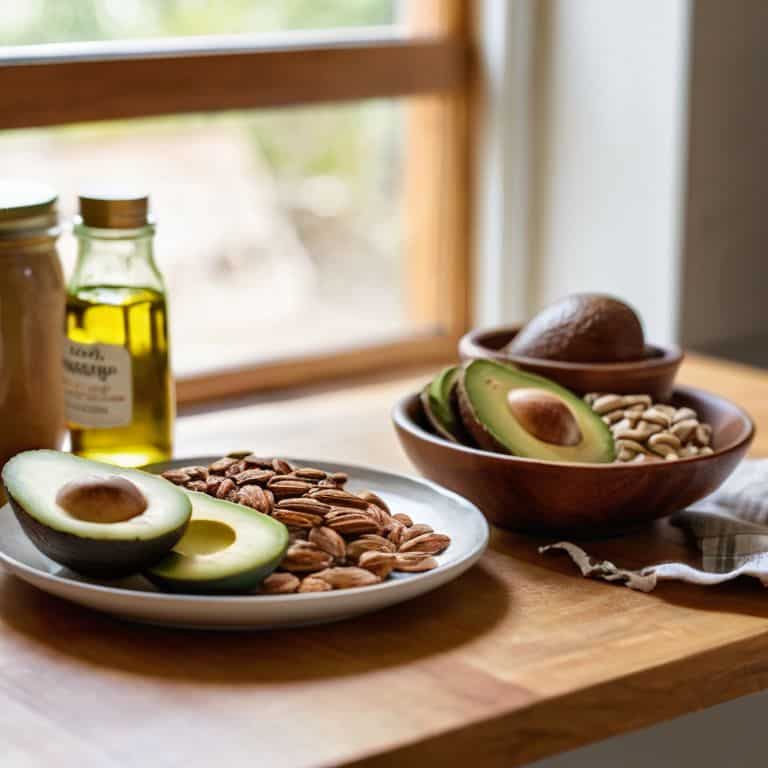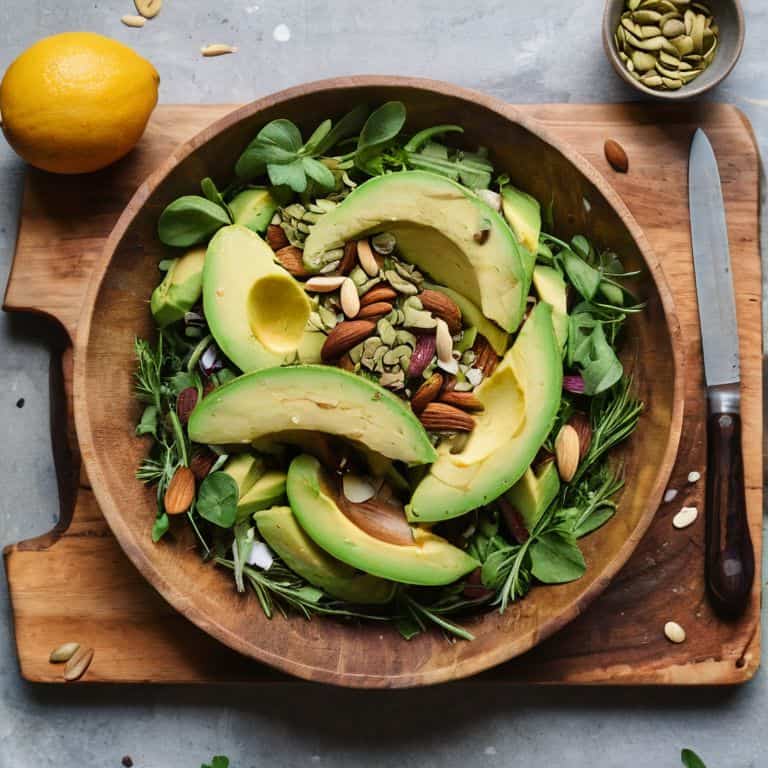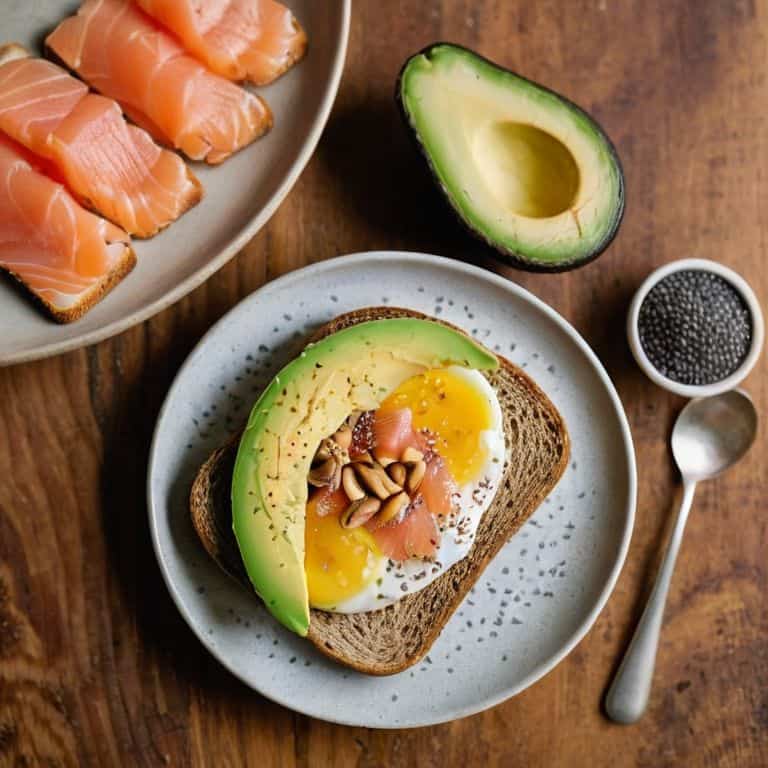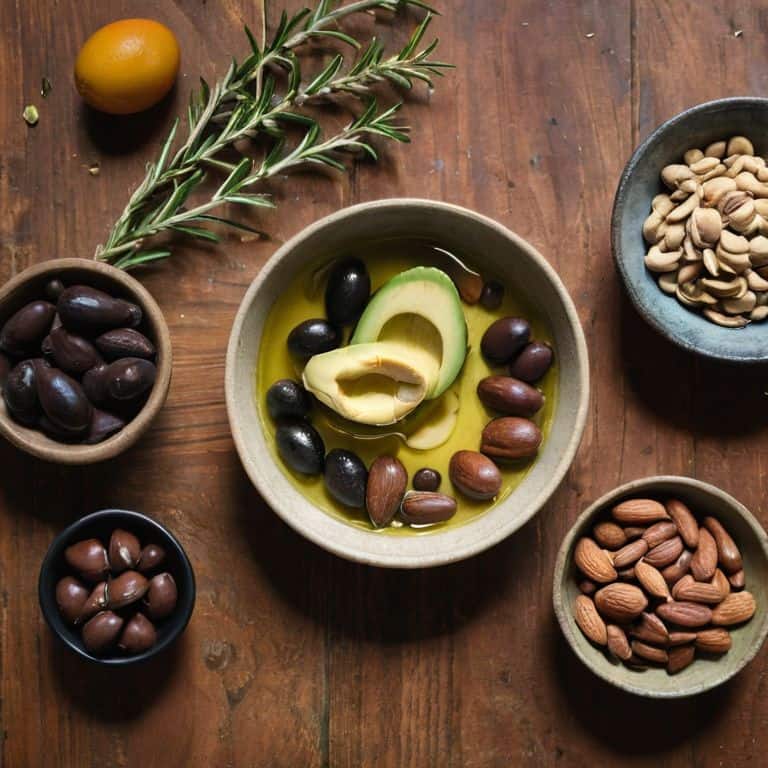As a nutritionist, I’ve seen far too many people struggle with the concept of a guide to healthy fats. The common myth that all fats are bad for you is not only frustrating, but it’s also counterproductive to a healthy lifestyle. I believe that the key to a balanced diet is understanding that not all fats are created equal, and that some are actually essential for our well-being. In my practice, I’ve helped numerous clients develop a healthy relationship with fat, and it’s amazing to see the positive impact it has on their overall health.
In this article, I promise to cut through the noise and provide you with practical advice on how to incorporate healthy fats into your diet. You’ll learn how to distinguish between good and bad fats, and how to make informed choices that will nourish your body. My goal is to empower you with the knowledge to create delicious and satisfying meals that are rich in healthy fats, and to show you that healthy eating doesn’t have to be boring or restrictive. By the end of this guide, you’ll be equipped with the tools to make sustainable lifestyle changes and develop a healthier, more positive relationship with food.
Table of Contents
Guide Overview: What You'll Need

Total Time: 1 hour
Estimated Cost: $10 – $20
Difficulty Level: Easy
Tools Required
- None Just a computer or book to read about healthy fats
Supplies & Materials
- Nuts such as almonds or walnuts
- Seeds like chia or flax
- Avocados for healthy fat intake
- Fatty Fish like salmon, rich in omega-3 fatty acids
Step-by-Step Instructions
- 1. First, let’s start by understanding what healthy fats are and why they’re essential for our bodies. Healthy fats are a type of nutrient that provides energy, helps absorb vitamins, and supports the health of our cells. They can be found in a variety of foods, including nuts, seeds, avocados, and fatty fish. To incorporate healthy fats into our diet, we need to _get familiar_ with these food groups and learn how to prepare them in a way that’s both delicious and nutritious.
- 2. Next, let’s talk about the different types of healthy fats and how to _balance our intake_. There are two main types of healthy fats: monounsaturated and polyunsaturated. Monounsaturated fats can be found in foods like avocados, olive oil, and nuts, while polyunsaturated fats are found in fatty fish, flaxseeds, and chia seeds. Aiming for a balanced mix of both types will help us reap the most benefits from these nutrients.
- 3. Now, let’s move on to some practical tips for adding healthy fats to our meals. One easy way to start is by _swapping out_ unhealthy fats for healthy ones. For example, instead of using butter or lard for cooking, we can use olive oil or avocado oil. We can also add nuts or seeds to our oatmeal or yogurt for an extra boost of healthy fats and crunch.
- 4. Another way to incorporate healthy fats into our diet is by making our own healthy fat-rich sauces and dressings. For instance, we can make a tasty salad dressing using olive oil, lemon juice, and garlic, or create a rich and creamy sauce for our pasta using avocado and Greek yogurt. The key is to _experiment with different flavors_ and find what works best for us.
- 5. When it comes to portion control, it’s essential to remember that healthy fats are high in calories, so we need to be mindful of how much we’re consuming. A good rule of thumb is to aim for 20-35% of our daily calories to come from fat. We can also use a food scale or measuring cups to help us _keep track of our portions_ and stay on track.
- 6. Let’s not forget about the importance of sustainability when it comes to our food choices. Choosing sustainable sources of healthy fats, such as locally sourced nuts or seeds, can help reduce our environmental impact and support local farmers. We can also _get creative_ with our food waste by using leftover nuts or seeds to make delicious and healthy snacks.
- 7. Finally, let’s talk about how to make healthy fats a joyful part of our mealtime routine. We can do this by _exploring new recipes_ and flavors, and finding healthy fat-rich foods that we love. Whether it’s trying a new type of nut or seed, or experimenting with different cooking methods, the key is to have fun and make healthy eating a _positive experience_. By doing so, we’ll be more likely to stick to our healthy habits and make nutritious food a lasting part of our lifestyle.
A Guide to Healthy Fats

As I delve into the world of healthy fats, I want to emphasize the importance of balance in our diets. It’s not just about adding more fats, but about making informed choices that nourish our bodies. Healthy fat rich foods, such as avocados and nuts, are not only delicious but also provide numerous benefits, including supporting heart health and satisfying our hunger.
When it comes to fatty acids, it’s essential to understand the difference between monounsaturated and polyunsaturated fats. While both are considered healthy, they have distinct effects on our bodies. Fatty fish, for example, are an excellent source of omega-3 fatty acids, which have been shown to reduce inflammation and improve brain function. Coconut oil, on the other hand, is a rich source of medium-chain triglycerides (MCTs), which have been linked to several health benefits, including improved weight management.
By incorporating these healthy fats into our diets, we can reap the rewards of improved overall health and well-being. The benefits of fatty acids are numerous, and it’s exciting to explore the various ways we can incorporate them into our meals. Whether it’s through dietary changes or supplements, the key is to find a balance that works for us and to make informed choices that support our health and happiness.
Indulge in Fatty Acids Bliss
Indulge in Fatty Acids Bliss
As I explore the world of healthy fats, I’m reminded of the vibrant stalls at my local farmers’ market, overflowing with an array of nuts, seeds, and avocados. Fatty acids, particularly omega-3 and omega-6, are the ultimate nutritional rockstars. Not only do they support heart health and brain function, but they also add a depth of flavor and creaminess to our favorite dishes. I love incorporating walnuts into my trail mix and using chia seeds as a topping for my morning oatmeal.
By embracing fatty acids, we can create recipes that are both nourishing and delicious. Whether it’s a hearty salad with a walnut vinaigrette or a rich chia seed pudding, the possibilities are endless. As a nutritionist, I’m excited to share my favorite ways to indulge in fatty acid bliss, and I hope you’ll join me on this culinary journey to discover the joy of healthy fats.
Rich Foods for Balanced Cholesterol
Rich Foods for Balanced Cholesterol
To achieve balanced cholesterol, it’s essential to focus on whole, nutrient-dense foods rather than just isolated nutrients. Fatty fish like salmon, rich in omega-3 fatty acids, help lower triglycerides and boost HDL (good) cholesterol. Nuts and seeds, such as almonds and chia seeds, are also rich in healthy fats and fiber, which support heart health.
By incorporating these rich foods into your diet, you’ll be nourishing your body with the essential fatty acids it needs to thrive, all while indulging in delicious, satisfying flavors and textures.
Nourish Your Way: 5 Essential Tips for a Healthy Fat Journey
- Start your day with a fat-fueled breakfast, like avocado toast or a smoothie bowl with nuts and seeds, to boost your energy and satisfaction
- Experiment with new sources of healthy fats, such as fatty fish, full-fat dairy, and nuts, to add variety and nutrition to your meals
- Don’t be afraid to get creative with healthy fats in your cooking, like using olive oil for roasting vegetables or making your own salad dressings with avocado oil
- Remember, balance is key: aim to include a source of healthy fat at each meal to keep you full and support your overall well-being
- Indulge in the rich flavors of healthy fats, like dark chocolate or a drizzle of truffle oil, as an occasional treat to keep your diet feeling joyful and sustainable
Nourishing Your Way: 3 Key Takeaways
Healthy fats are not just a necessity, but a delicious addition to your diet – think avocados, nuts, and olive oil, which can elevate your meals and snacks while supporting heart health and satisfying your cravings
Balanced cholesterol is within reach when you focus on whole, rich foods like fatty fish, full-fat dairy, and eggs, rather than relying on processed or packaged items that can be high in unhealthy fats and low in essential nutrients
By embracing healthy fats and shifting your mindset away from restriction and towards nourishment, you can break free from the dieting cycle and cultivate a positive relationship with food, where every bite is a celebration of flavor and nutrition
Nourishing Wisdom
Healthy fats are not just a nutrient, they’re a permission slip to indulge in the richness of life – to savor, to delight, and to nourish our bodies with the deepest pleasure.
Laura Paskal
Embracing the Joy of Healthy Fats

As we conclude our journey through the wonderful world of healthy fats, let’s summarize the key takeaways: nourishing your body with the right fats can lead to improved heart health, enhanced brain function, and even support weight management. We’ve explored the bliss of fatty acids, discovered rich foods for balanced cholesterol, and learned how to incorporate these nutrients into our daily meals. By focusing on adding nutrients rather than just removing calories, we can create a more positive and sustainable relationship with food.
So, let’s make a conscious decision to ditch the deprivation mindset and indulge in the delicious world of healthy fats. Remember, healthy eating is a journey, not a destination. It’s about finding joy in the process, experimenting with new recipes, and loving the food that loves us back. As you continue on your path to wellness, I encourage you to stay curious, keep exploring, and always prioritize nourishing your body and soul with the foods that bring you delight and satisfaction.
Frequently Asked Questions
What are some creative ways to incorporate healthy fats into my daily meals?
I love getting creative with healthy fats! Try adding sliced avocado to your omelets, sprinkling chopped nuts on your oatmeal, or using olive oil as a finishing touch for roasted veggies. You can also make your own trail mix with nuts and seeds, or blend fatty acids into your favorite smoothie recipes – the possibilities are endless!
How can I balance my intake of saturated and unsaturated fats for optimal heart health?
To balance saturated and unsaturated fats, focus on whole foods like avocados, nuts, and fatty fish, which naturally combine both types. Aim for a variety of colorful plates and don’t fear saturated fats entirely – they have their place in a balanced diet.
Are there any specific healthy fats that are particularly beneficial for brain function and mental clarity?
Absolutely, I’m obsessed with brain-boosting healthy fats! Omega-3 rich foods like walnuts, chia seeds, and fatty fish are total rockstars for supporting brain function and mental clarity. I also love incorporating MCT oil and ghee into my recipes for an extra cognitive kick. These healthy fats are like a hug for your brain, promoting focus and calmness – isn’t that amazing?
